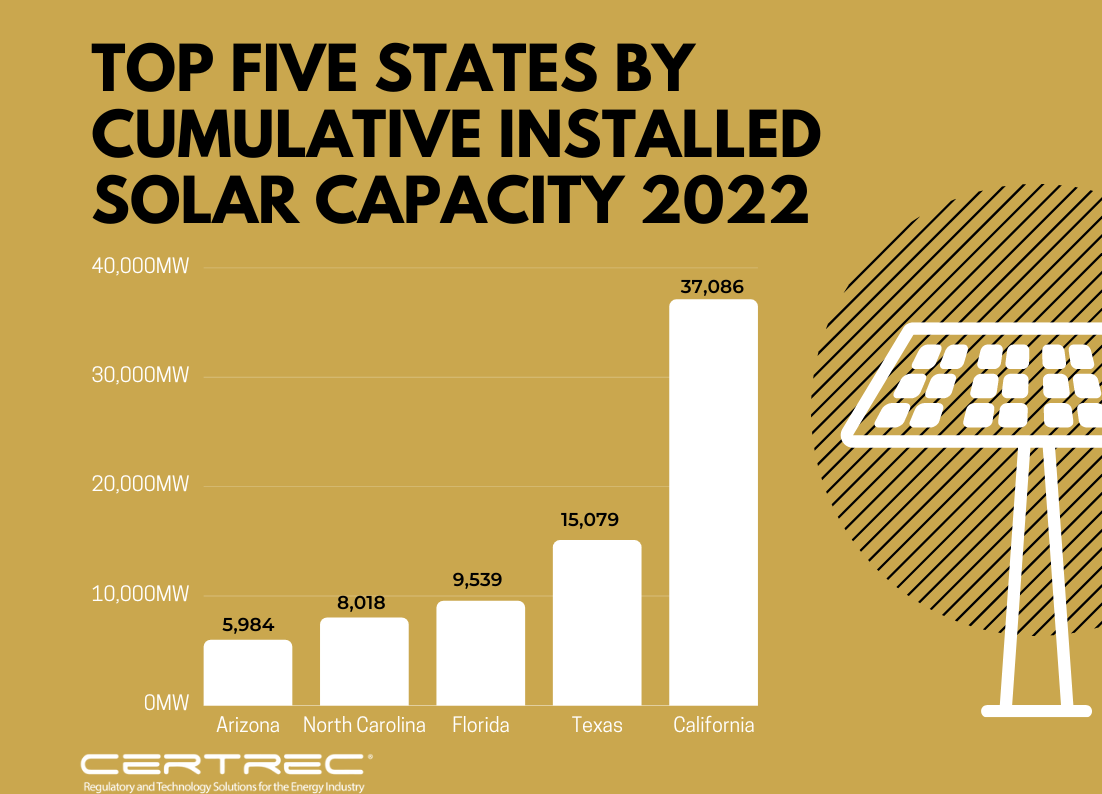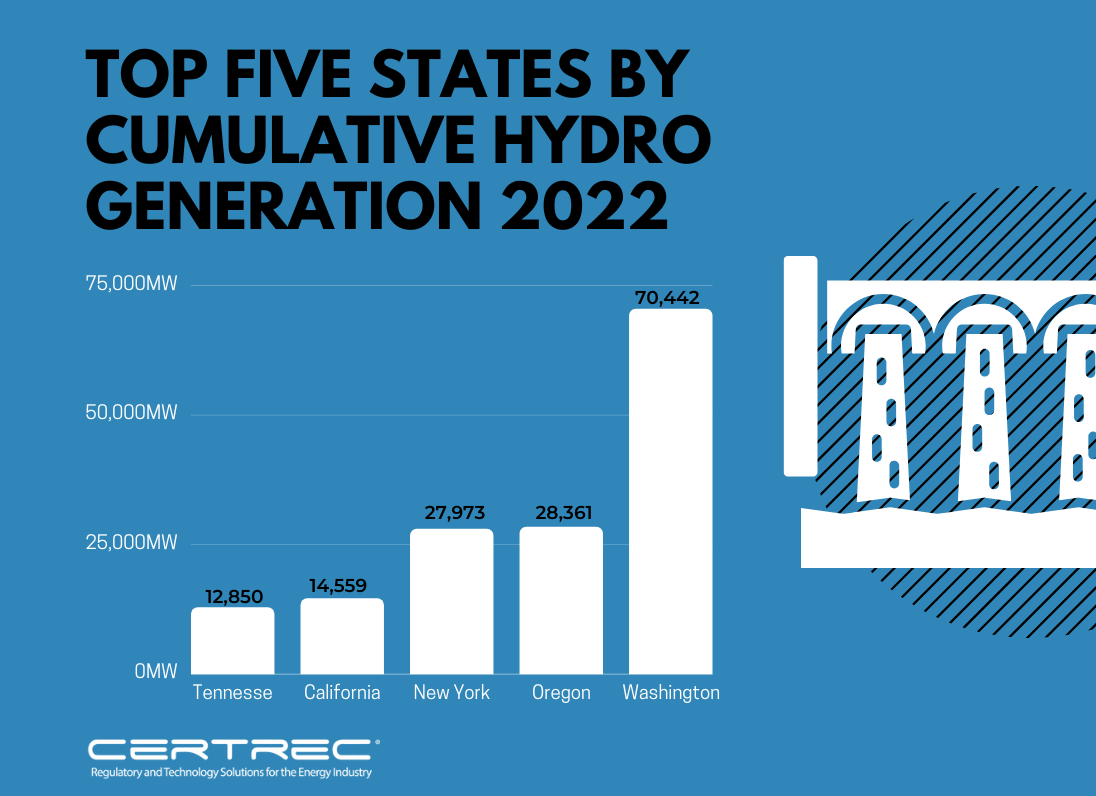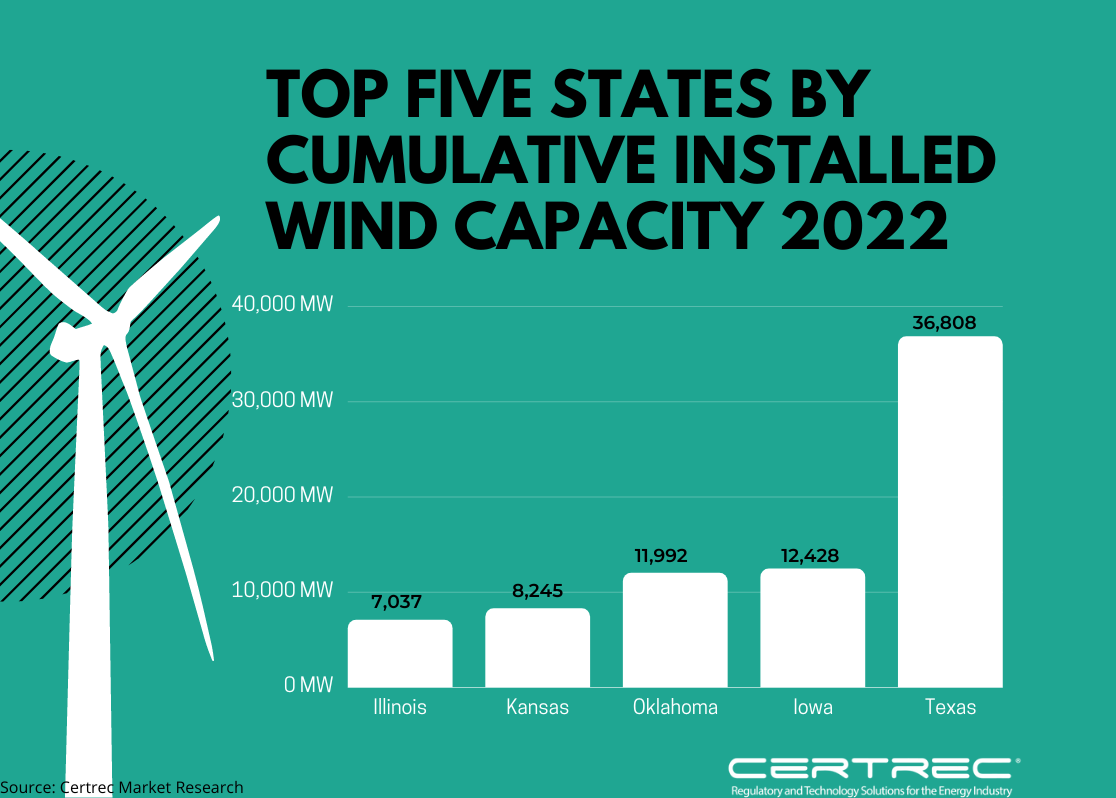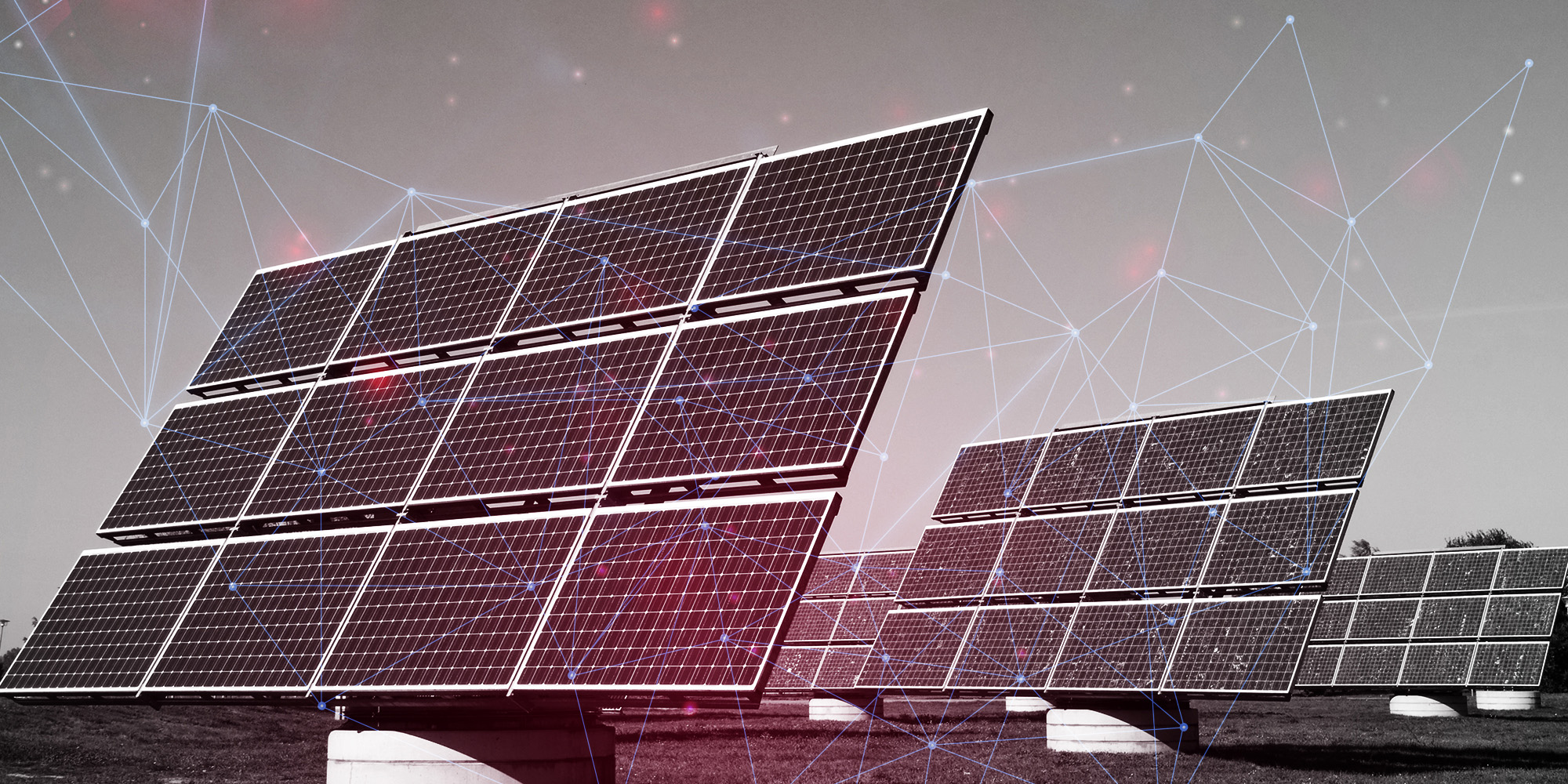Solar Market Data
According to SEIA In the last decade alone, solar has experienced an average annual growth rate of 33%. Thanks to federal policies like the Solar Investment Tax Credit, rapidly declining costs, and increasing demand across the private and public sector for clean electricity, there are now more than 130.9 gigawatts (GW) of solar capacity installed nationwide. This is enough to power 23 million homes.
The cost to install solar has dropped by more than 60% over the last decade. However, recent shipping constraints and other supply chain challenges have led to price increases across the U.S. solar industry.
Solar has ranked first in new electric capacity additions for the last 9 years. Solar’s increasing competitiveness against other technologies has allowed it to quickly increase its share of total U.S. electrical generation from just 0.1% in 2010 to over 4%.
As demand for solar continues to grow, new state entrants are grabbing an increasing share of the national market. Only about 1% of commercial electricity demand is served by on-site solar. So, there remains significant opportunity for growth.
The History of Solar Energy in the United States
The ability to generate usable energy from light was first demonstrated in 1839. A young physicist named Edmon Becquerel discovered the photovoltaic effect, which is a process that produces a voltage or electric current when exposed to light or radiant energy. However, the process of how light produces electricity wasn’t understood until Albert Einstein wrote a paper explaining the photoelectric effect in 1905.
In 1954, engineers from Bell Laboratories announced the invention of the first practical silicon solar cell. The New York Times called it “the beginning of a new era.” While solar power remained too costly for commercial use, NASA and the United States military and government used the technology to power satellites and launch spacecraft.
The federal government’s oil price controls of the early 1970s, followed by the Arab oil embargo of 1973 created an energy crisis in the United States which pushed the federal government to develop alternatives to gas and oil. Congress passed five energy bills in 1974, two of which cited solar power as a potential solution to the energy crisis.
Declining oil production and rising oil imports throughout the early 2000s helped lead to the passage of the Energy Policy Act of 2005 (EPAct), the first omnibus legislation dealing with energy policy since 1992. In addition to tax credits and grants, the government continues to heavily subsidize the industry with research and development, commercialization, and regulatory support.
Nowadays, solar power remains highly affordable. There are several incentives available at the state and federal levels to support the advancement of solar.
How do Solar Panels Work?
Solar radiation is light that is emitted by the sun. Solar technologies capture this radiation and turn it into useful forms of energy. There are two forms of energy generated from the sun for our use – electricity and heat. Both are generated through the use of solar panels, which range in size from residential rooftops to ‘solar farms’ stretching over acres of rural land.
Solar panels are usually made from silicon installed in a metal panel frame with a glass casing. When photons, or particles of light, hit the thin layer of silicon on the top of the solar panel, they knock electrons off the silicon atoms. This PV charge creates an electric current (specifically, direct current or DC) which is captured by the wiring in solar panels. This DC electricity is then converted to alternating current (AC) by an inverter.
Solar power only requires some level of daylight to harness the sun’s energy. That said, the rate at which solar panels generate electricity does vary depending on the amount of direct sunlight and the quality, size, number, and location of panels in use.
Some confuse Solar PV and Solar Thermal Panels. The energy source is the same, but the technology in each system is different. Solar PV panels generate electricity while solar thermal panels generate heat.

Which States Use the Most Solar Energy and Have the Highest Number of Solar Capacity Installed?
- California (37,086 MW)
- Texas (15,079 MW)
- Florida (9,539 MW)
- North Carolina (8,018 MW)
- Arizona (5,984 MW)
Want more information on solar farms?
Click here to see that largest solar farms in the United States.
Share
Solar Market Data
According to SEIA In the last decade alone, solar has experienced an average annual growth rate of 33%. Thanks to federal policies like the Solar Investment Tax Credit, rapidly declining costs, and increasing demand across the private and public sector for clean electricity, there are now more than 130.9 gigawatts (GW) of solar capacity installed nationwide. This is enough to power 23 million homes.
The cost to install solar has dropped by more than 60% over the last decade. However, recent shipping constraints and other supply chain challenges have led to price increases across the U.S. solar industry.
Solar has ranked first in new electric capacity additions for the last 9 years. Solar’s increasing competitiveness against other technologies has allowed it to quickly increase its share of total U.S. electrical generation from just 0.1% in 2010 to over 4%.
As demand for solar continues to grow, new state entrants are grabbing an increasing share of the national market. Only about 1% of commercial electricity demand is served by on-site solar. So, there remains significant opportunity for growth.
The History of Solar Energy in the United States
The ability to generate usable energy from light was first demonstrated in 1839. A young physicist named Edmon Becquerel discovered the photovoltaic effect, which is a process that produces a voltage or electric current when exposed to light or radiant energy. However, the process of how light produces electricity wasn’t understood until Albert Einstein wrote a paper explaining the photoelectric effect in 1905.
In 1954, engineers from Bell Laboratories announced the invention of the first practical silicon solar cell. The New York Times called it “the beginning of a new era.” While solar power remained too costly for commercial use, NASA and the United States military and government used the technology to power satellites and launch spacecraft.
The federal government’s oil price controls of the early 1970s, followed by the Arab oil embargo of 1973 created an energy crisis in the United States which pushed the federal government to develop alternatives to gas and oil. Congress passed five energy bills in 1974, two of which cited solar power as a potential solution to the energy crisis.
Declining oil production and rising oil imports throughout the early 2000s helped lead to the passage of the Energy Policy Act of 2005 (EPAct), the first omnibus legislation dealing with energy policy since 1992. In addition to tax credits and grants, the government continues to heavily subsidize the industry with research and development, commercialization, and regulatory support.
Nowadays, solar power remains highly affordable. There are several incentives available at the state and federal levels to support the advancement of solar.
How do Solar Panels Work?
Solar radiation is light that is emitted by the sun. Solar technologies capture this radiation and turn it into useful forms of energy. There are two forms of energy generated from the sun for our use – electricity and heat. Both are generated through the use of solar panels, which range in size from residential rooftops to ‘solar farms’ stretching over acres of rural land.
Solar panels are usually made from silicon installed in a metal panel frame with a glass casing. When photons, or particles of light, hit the thin layer of silicon on the top of the solar panel, they knock electrons off the silicon atoms. This PV charge creates an electric current (specifically, direct current or DC) which is captured by the wiring in solar panels. This DC electricity is then converted to alternating current (AC) by an inverter.
Solar power only requires some level of daylight to harness the sun’s energy. That said, the rate at which solar panels generate electricity does vary depending on the amount of direct sunlight and the quality, size, number, and location of panels in use.
Some confuse Solar PV and Solar Thermal Panels. The energy source is the same, but the technology in each system is different. Solar PV panels generate electricity while solar thermal panels generate heat.
The five states with the most solar capacity installed are:
- California (37,086 MW)
- Texas (15,079 MW)
- Florida (9,539 MW)
- North Carolina (8,018 MW)
- Arizona (5,984 MW)
Want more information on solar farms?
Click here to see that largest solar farms in the United States.









